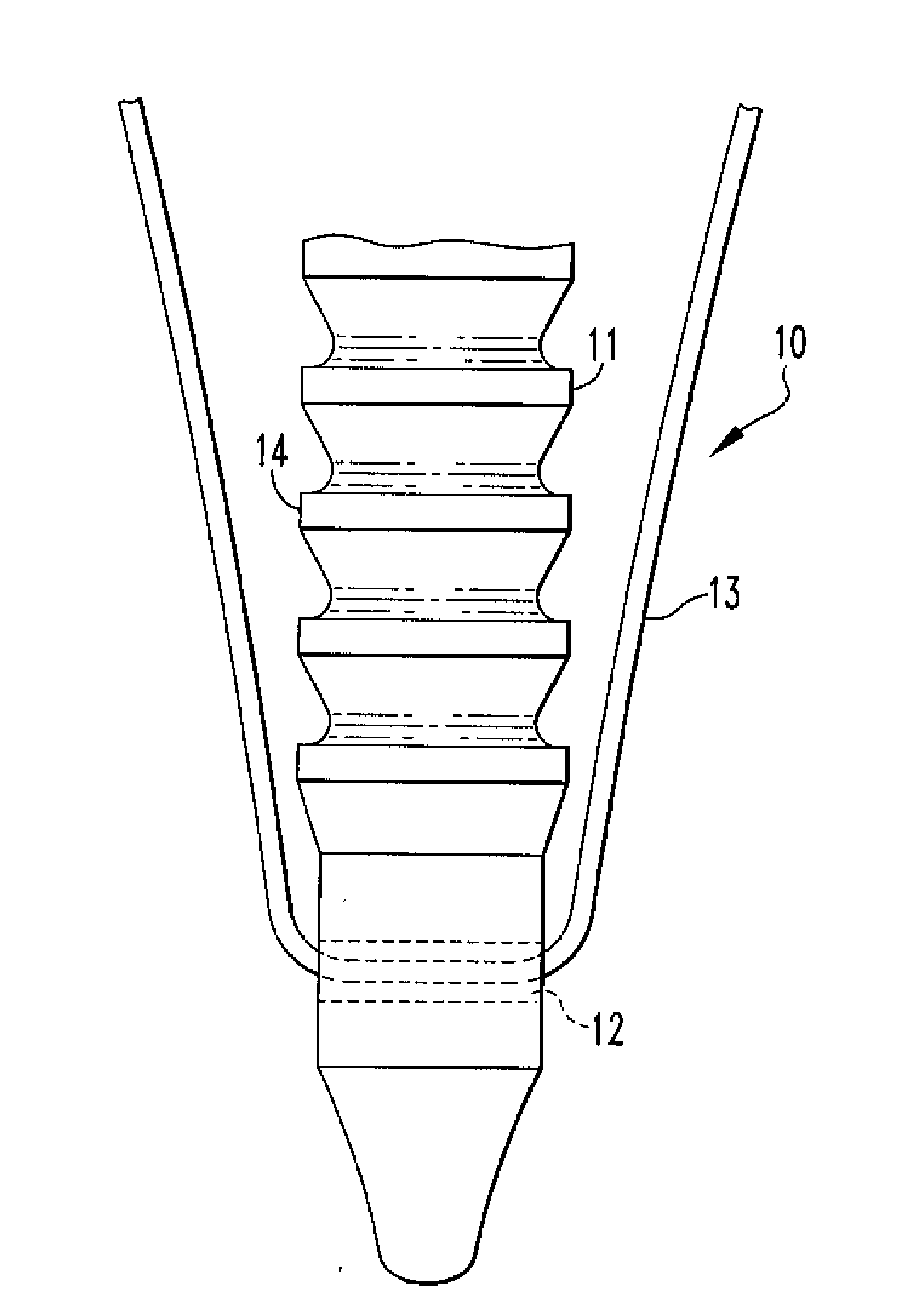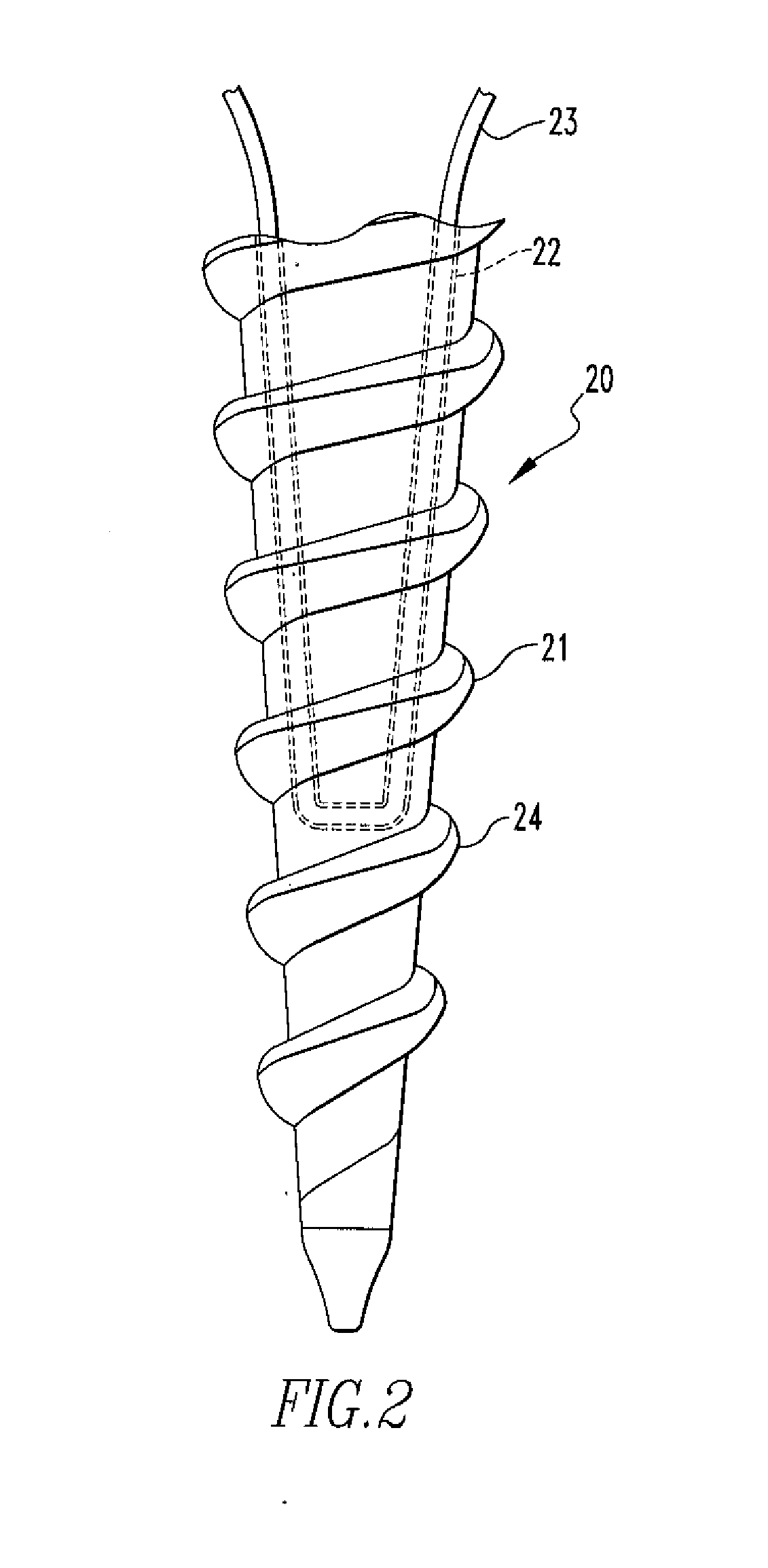Fixation Devices and Method of Repair
a technology of fixation device and bone, which is applied in the field of soft tissue fixation, can solve the problems of limiting the size and bone quality of the use of these devices, and achieve the effects of increasing the width of the device, and increasing the fixation strength of the devi
- Summary
- Abstract
- Description
- Claims
- Application Information
AI Technical Summary
Benefits of technology
Problems solved by technology
Method used
Image
Examples
example one
[0054]Suture anchors of the present disclosure were sterilized using ethylene oxide. Three suture anchors were then placed in a phosphate buffered saline solution at 37° C., which stimulates the in vivo environment. Measurements of the anchor widths and lengths were taken at regular intervals and the results are shown in FIGS. 5 & 6, respectively. Over the course of about 3 weeks, the width of the suture anchors increased and the length decreased. A slight length increase was shown at 12 days. In both figures, results for the first, second, and third suture anchors are represented as A, B, & C, respectively.
[0055]Anchors loaded with ultra high molecular weight polyethylene suture were evaluated for fixation strength in a simulated bone material over a period of time. A 2.6 mm hole was drilled into the center of a polyurethane simulated bone material with a density of 20 pcf, which represents good quality bone, and the anchor inserted into the hole. Each bone block, with inserted anc...
example two
[0056]Resorbable, oriented amorphous zone drawn fibers of Poly (D,L lactide-co-glycolide) and calcium carbonate were placed into water at a temperature of 37° C. for 3 hours. The ratio of lactide:glycolide was 85:15 and the calcium carbonate was present at between about 30% to about 40% by weight of the polymer composition. The fibers were removed, surface dried, and analyzed using dynamic mechanical thermal analysis (DMTA). The data from the DMTA was compared to DMTA data of Poly (D,L lactide-co-glycolide)+calcium carbonate fibers that had not been placed in water. FIG. 9 shows the results of this comparison. In FIG. 9, the triangle represents the drawn fibers that were placed in water for 3 hours at 37° C. and the diamond represents the drawn fibers that had not been placed in water. The draw ratio for both fibers was 3.3. The draw ratio is a measure of the degree of stretching during the orientation of a fiber, expressed as the ratio of the cross-sectional area of the undrawn mat...
example three
[0057]A hole having a diameter of about 8.5 mm was drilled into a sawbone and a die drawn plug constructed of Poly (D,L lactide-co-glycolide) and calcium carbonate was inserted. The fixation strength of the plug was determined by using a push-out test. The push-out force of an initial dry plug was measured using an Instron and was found to be 0 N. The Instron was operated at 1 mm / min. The plug was immersed in water at 37° C. and soaked for 9 days. The push-out force of the plug was then measured and was found to be about 1700 N. The relaxation of the oriented network was responsible for the tight fit and enhanced fixation strength.
PUM
| Property | Measurement | Unit |
|---|---|---|
| temperature | aaaaa | aaaaa |
| density | aaaaa | aaaaa |
| density | aaaaa | aaaaa |
Abstract
Description
Claims
Application Information
 Login to View More
Login to View More - R&D
- Intellectual Property
- Life Sciences
- Materials
- Tech Scout
- Unparalleled Data Quality
- Higher Quality Content
- 60% Fewer Hallucinations
Browse by: Latest US Patents, China's latest patents, Technical Efficacy Thesaurus, Application Domain, Technology Topic, Popular Technical Reports.
© 2025 PatSnap. All rights reserved.Legal|Privacy policy|Modern Slavery Act Transparency Statement|Sitemap|About US| Contact US: help@patsnap.com



